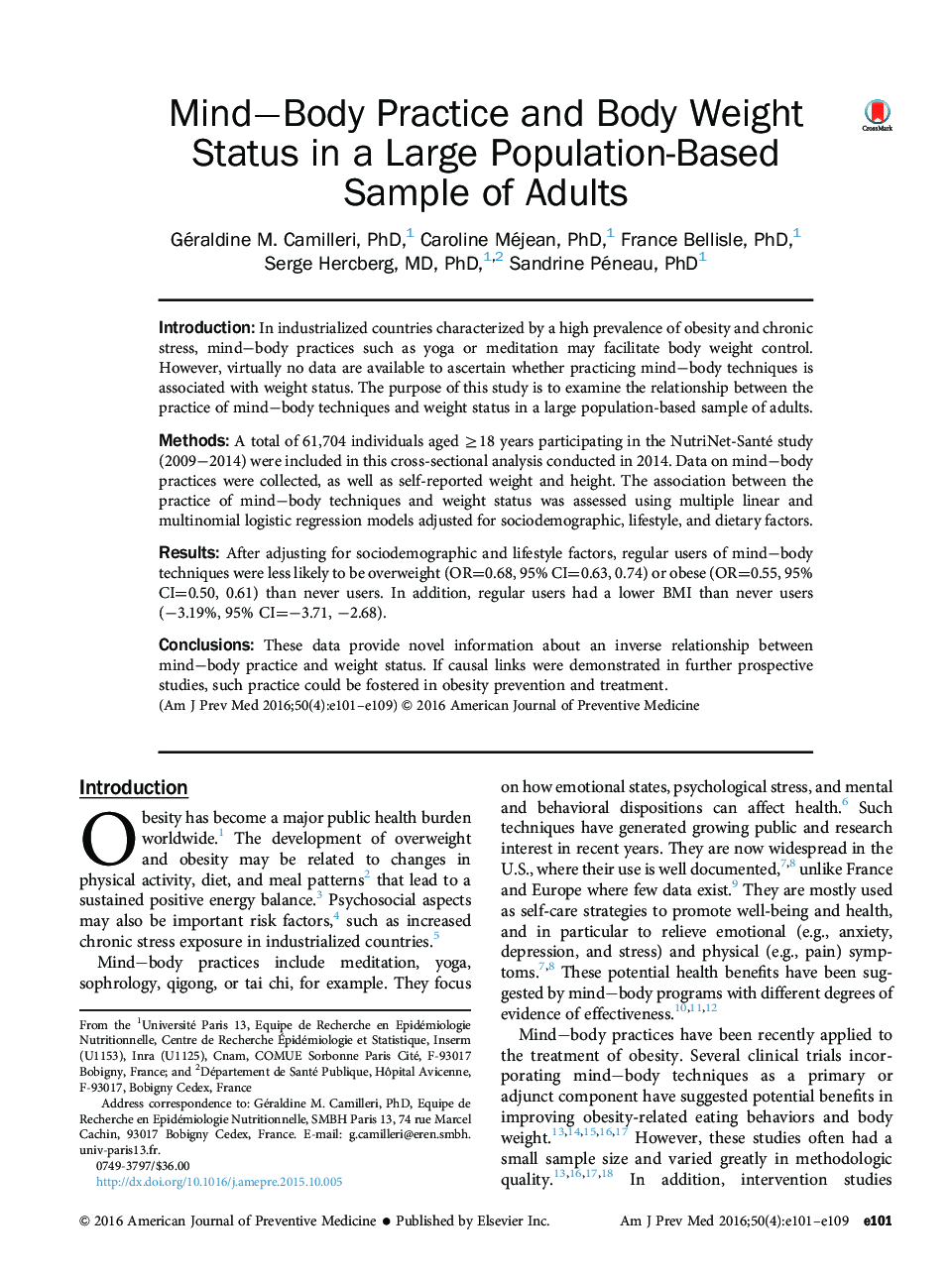| کد مقاله | کد نشریه | سال انتشار | مقاله انگلیسی | نسخه تمام متن |
|---|---|---|---|---|
| 6237214 | 1608625 | 2016 | 9 صفحه PDF | دانلود رایگان |

IntroductionIn industrialized countries characterized by a high prevalence of obesity and chronic stress, mindâbody practices such as yoga or meditation may facilitate body weight control. However, virtually no data are available to ascertain whether practicing mindâbody techniques is associated with weight status. The purpose of this study is to examine the relationship between the practice of mindâbody techniques and weight status in a large population-based sample of adults.MethodsA total of 61,704 individuals aged â¥18 years participating in the NutriNet-Santé study (2009â2014) were included in this cross-sectional analysis conducted in 2014. Data on mindâbody practices were collected, as well as self-reported weight and height. The association between the practice of mindâbody techniques and weight status was assessed using multiple linear and multinomial logistic regression models adjusted for sociodemographic, lifestyle, and dietary factors.ResultsAfter adjusting for sociodemographic and lifestyle factors, regular users of mindâbody techniques were less likely to be overweight (OR=0.68, 95% CI=0.63, 0.74) or obese (OR=0.55, 95% CI=0.50, 0.61) than never users. In addition, regular users had a lower BMI than never users (â3.19%, 95% CI=â3.71, â2.68).ConclusionsThese data provide novel information about an inverse relationship between mindâbody practice and weight status. If causal links were demonstrated in further prospective studies, such practice could be fostered in obesity prevention and treatment.
Journal: American Journal of Preventive Medicine - Volume 50, Issue 4, April 2016, Pages e101-e109